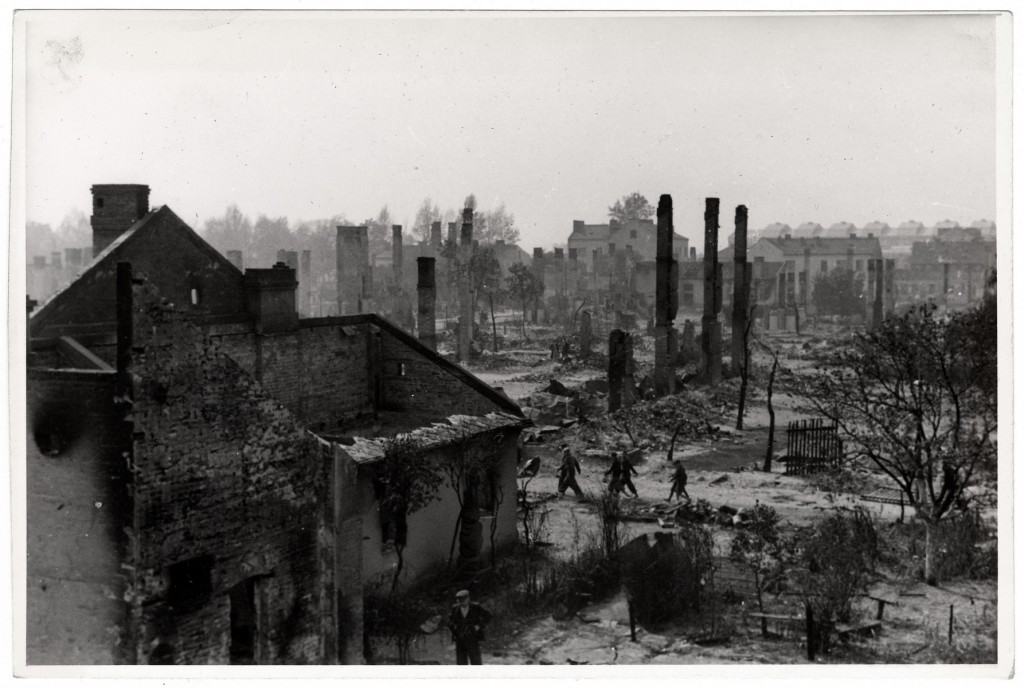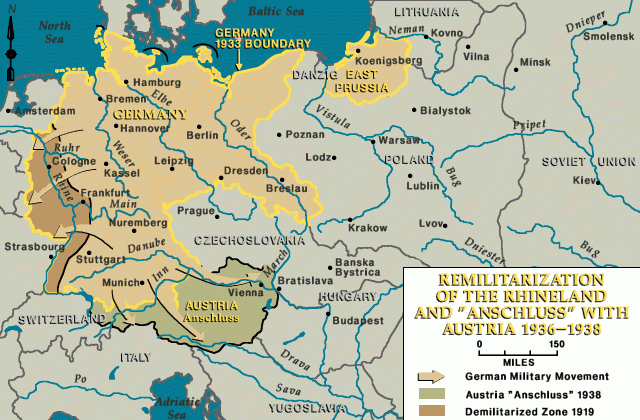
Invasion of Poland, Fall 1939
German troops invaded Poland on September 1, 1939, triggering World War II. In response to German aggression, Great Britain and France declared war on Nazi Germany.
Key Facts
-
1
Nazi Germany possessed overwhelming military superiority over Poland. The assault on Poland demonstrated Germany’s ability to combine air power and armor in a new kind of mobile warfare.
-
2
On September 17, 1939, the Soviet Union invaded eastern Poland, sealing Poland’s fate. The last operational Polish unit surrendered on October 6.
-
3
After Poland’s defeat in early October 1939, Nazi Germany and the Soviet Union divided the country in accordance with a secret protocol to the German-Soviet Non-Aggression Pact.
Hitler's Non-Aggression Pact with Poland
One of Adolf Hitler's first major foreign policy initiatives after coming to power in 1933 was to sign a non-aggression pact with Poland in January 1934. This move was unpopular with many Germans who supported Hitler but resented the fact that Poland had received the former German provinces of West Prussia, Poznan (Poznań), and Upper Silesia after World War I under the Treaty of Versailles. However, Hitler sought the non-aggression pact in order to neutralize the possibility of a French-Polish military alliance against Germany before Germany had a chance to rearm in the aftermath of the Great War.
Appeasement in Europe
In the mid- and late-1930s, France and especially Great Britain followed a foreign policy of appeasement. In fact, the policy of appeasement was closely associated with British prime minister Neville Chamberlain. The objective of this policy was to maintain peace in Europe by making limited concessions to German demands. In Britain, public opinion tended to favor some revision of the territorial and military provisions of the Versailles treaty. Moreover, neither Britain nor France felt militarily prepared to fight a war against Nazi Germany.

Britain and France essentially acquiesced as Nazi Germany
- revoked the Versailles treaty’s limitations on its military (1935);
- remilitarized the Rhineland (1936);
- and annexed Austria (March 1938).
In response to Hitler’s threat to wage war against Czechoslovakia, British and French leaders signed the Munich Agreement in September 1938. This agreement ceded to Germany the Czech border region known as the Sudetenland in return for Hitler’s promise to resolve all future conflicts peacefully.
Despite Hitler’s promise at Munich and Anglo-French guarantees to defend Czechoslovakia, the Germans dismantled the Czechoslovak state in March 1939. Britain and France responded by guaranteeing the integrity of the Polish state. This did not deter Hitler, who was determined not to be dissuaded from war by either threats or concessions. On April 28, 1939, he announced Germany’s withdrawal from the non-aggression pact signed with Poland just over five years earlier. Hitler went on to negotiate a non-aggression pact with the Soviet Union in August 1939. The German-Soviet Pact, which secretly provided for Poland to be partitioned between the two powers, enabled Germany to attack Poland without the fear of Soviet intervention.
Invasion and Partition of Poland
On September 1, 1939, Germany invaded Poland. To justify the action, Nazi propagandists accused Poland of persecuting ethnic Germans living in Poland. They also falsely claimed that Poland was planning, with its allies Great Britain and France, to encircle and dismember Germany. The SS, in collusion with the German military, staged a phony attack on a German radio station. The Germans falsely accused the Poles of this attack. Hitler then used the action to launch a “retaliatory” campaign against Poland.
Germany launched the unprovoked attack at dawn on September 1, 1939, with an advance force consisting of more than 2,000 tanks supported by nearly 900 bombers and over 400 fighter planes. In all, Germany deployed 60 divisions and nearly 1.5 million men in the invasion. From East Prussia and Germany in the north, and Silesia and Slovakia in the south, German units quickly broke through Polish defenses along the border and advanced on Warsaw in a massive encirclement attack.
Poland mobilized late, and political considerations forced its army into a disadvantageous deployment. The Polish army also lacked modern arms and equipment, had few armored and motorized units, and could deploy little more than 300 planes, most of which the Luftwaffe destroyed in the first few days of the invasion. Despite fighting tenaciously and inflicting serious casualties on the Germans, the Polish army was defeated within weeks. The world adopted a new term to describe Germany’s successful war tactic: Blitzkrieg, or “lightning war.” The tactic consisted of staging a surprise attack with massive, concentrated forces of fast-moving armored units supported by overwhelming air power.
Britain and France stood by their guarantee of Poland's border and declared war on Germany on September 3, 1939. However, Poland found itself fighting a two front war when the Soviet Union invaded Poland from the east on September 17. The Polish government fled the country that same day.
After heavy shelling and bombing, Polish forces in Warsaw officially surrendered to the Germans on September 28, 1939.
In accordance with the secret protocol to their non-aggression pact, Germany and the Soviet Union partitioned Poland on September 29, 1939. The demarcation line was along the Bug River.
The last resistance of Polish units ended on October 6.
The German Occupation of Poland
In October 1939, Germany directly annexed former Polish territories along Germany's eastern border: West Prussia, Poznan (Poznań), Upper Silesia, and the former Free City of Danzig. The remainder of German-occupied Poland—including the cities of Warsaw, Krakow (Kraków), Radom, and Lublin—was organized as the so-called Generalgouvernement (General Government)—under a civilian governor general, the Nazi Party lawyer Hans Frank.
In June 1941, Nazi Germany invaded Soviet-occupied eastern Poland as part of its attack on the Soviet Union. Eventually, Nazi Germany occupied all of prewar Poland. The German occupation of Poland came to an end as the Soviet Red Army forced the German military to retreat through the country towards Berlin in 1944 and early 1945.
Critical Thinking Questions
Investigate the reasoning behind various choices by the Allies in response to German policy and military moves in the 1930s.
What factors might affect national responses to aggression?
What does war make possible?

